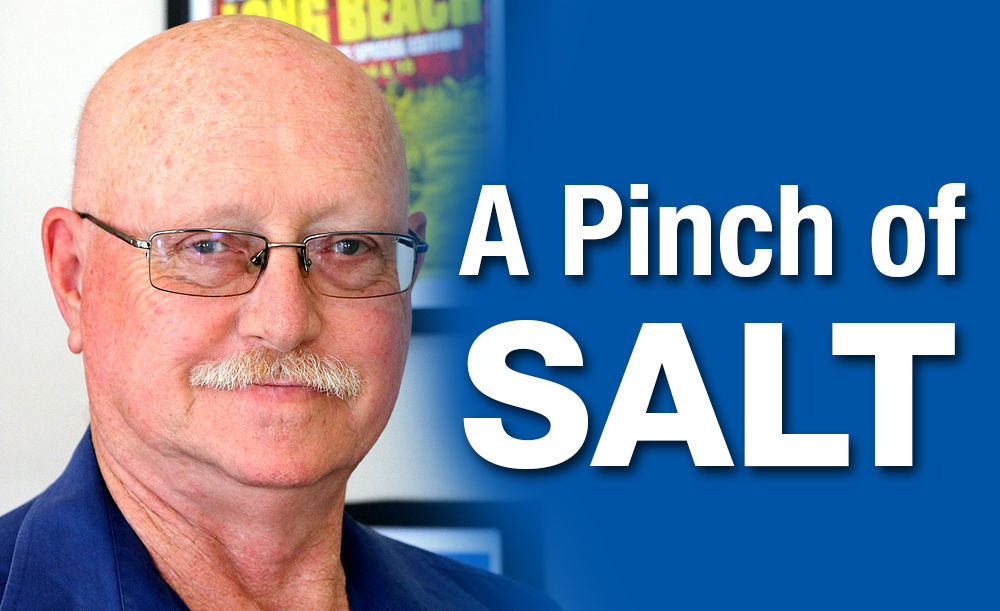There are some great things about living at the mouth of a river.
The very definition means you are living on the coast of an ocean – a perk almost as good as living in the mountains.
If you’re a farmer, it means fertile land that renews itself (see Mississippi Delta for reference).
If you’re a sailor or a shipper, it usually means a harbor, bay or somewhere to stash your boat and get on land.
Then there are some pretty cruddy things about living at the mouth of a river.
Take that literally – when it rains, the crud from animals, etc., gets washed down the river to your shoreline waters.
Trash from far away gets a ride on the river down to the ocean, particularly when it rains, and pretty much all the time, too.
When floods occur, the mouth of the river is where it all climaxes before the ocean absorbs the flow.
All of these cruddy things are compounded when the river is forced into a concrete channel. There’s no place for the crud to escape until it reaches the river’s mouth.
It can be argued that Long Beach wouldn’t be here today if it wasn’t for the Los Angeles River. That long beach was formed in large part by sand sediment coming down the river. The port was created 114 years ago on the mudflats at the river’s mouth when a cargo of lumber was unloaded.
The waves that made the city a hot tourist attraction, at least until World War II, were shaped in part by the river’s flow.
Speaking of World War II, the Navy’s huge Long Beach presence was due to the harbor created by the LA River.
But. And there’s always a but.
For decades now – at least the decades I’ve been living here – the crud flushed down the river to Long Beach has been a major headache. The breakwater that protects our port and coastline hasn’t helped in that regard, trapping most of the trash in the harbor until it washes up on the beach.
No doubt some of that trash comes from Long Beach itself. There’s almost 6 miles of river inside city borders.
But we’re talking about the entire Los Angeles River Watershed – 841 square miles along 51 miles of river, going through 44 cities and unincorporated areas of Los Angeles County. It’s no exaggeration to say that’s a lot of crud.
To be fair, there has been plenty of effort put into cleaning up the river, both in terms of water quality and the amount of trash it carries. An outfit called the Los Angeles Regional Water Quality Control Board is charged with overseeing the river, and has been making rules for cities to follow – on pain of fines, etc. – for years.
Five years ago, this board put out rules saying cities had to take action to stiffen what it calls Total Maximum Daily Loads (TMDL) for pollution and trash. They said there should be no, zero, litter put into the river from specifically controlled sources like storm water drains.
I made fun of that edict because there’s no way a city can capture every bit of trash. A bunch of the crud comes from street runoff, encampments along the river, uncaring people dumping trash, etc.
Turns out the Water Quality board members aren’t totally oblivious to reality, so they came up with a way cities could get their certification. It is called the Conditional Waiver of Waste Discharge Requirements for Discharges of Trash from Nonpoint Sources (I think bureaucrats get paid by the word).
That waiver’s five-year life has ended, and the board is studying where to go from here.
Long Beach leaders believe, rightfully so, that they should have a large say in what happens next. Tuesday night, the City Council approved a motion to advocate for upstream solutions to restore the river and “unburden Long Beach’s Waterways from Trash.”
After all, in the last five years Long Beach has collected more than 25 million pounds of trash and debris from the river and the beaches. Even with significant payments from Los Angeles County for that work, the city says it has spent $12.3 million from its Tidelands Fund on that cleanup.
We’ve tried hard to keep our beaches clean. Justin Rudd has organized a monthly cleanup for what seems like forever, and other neighborhood groups near the coast do the same. There are trash booms, trash skimmers, even a boat that acts like a trash vacuum constantly at work.
But with the 2028 Summer Olympics on the way, and Long Beach hosting multiple events along the coastline, this problem has taken on added significance. It’s important for the entire region to have Long Beach’s beaches pristine when the world comes to visit.
It is going to take a lot of different approaches to deal with this issue – and there still will be trash to clean up. Long Beach is ready and willing to do its part, but it needs help, including more money to do the work.
This rule-making period is the window to make sure that happens. Long Beach needs a loud voice now, and I’m glad to see that the council is aware of that.
What do you say? Let’s lend them a hand.

